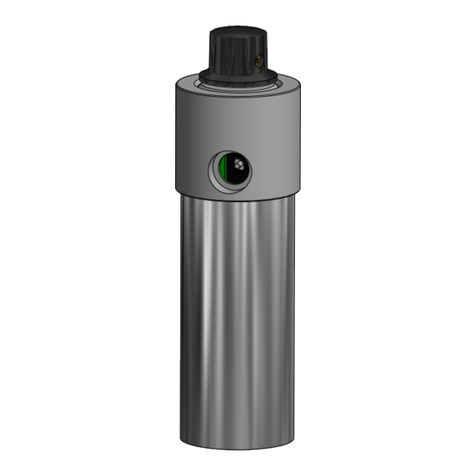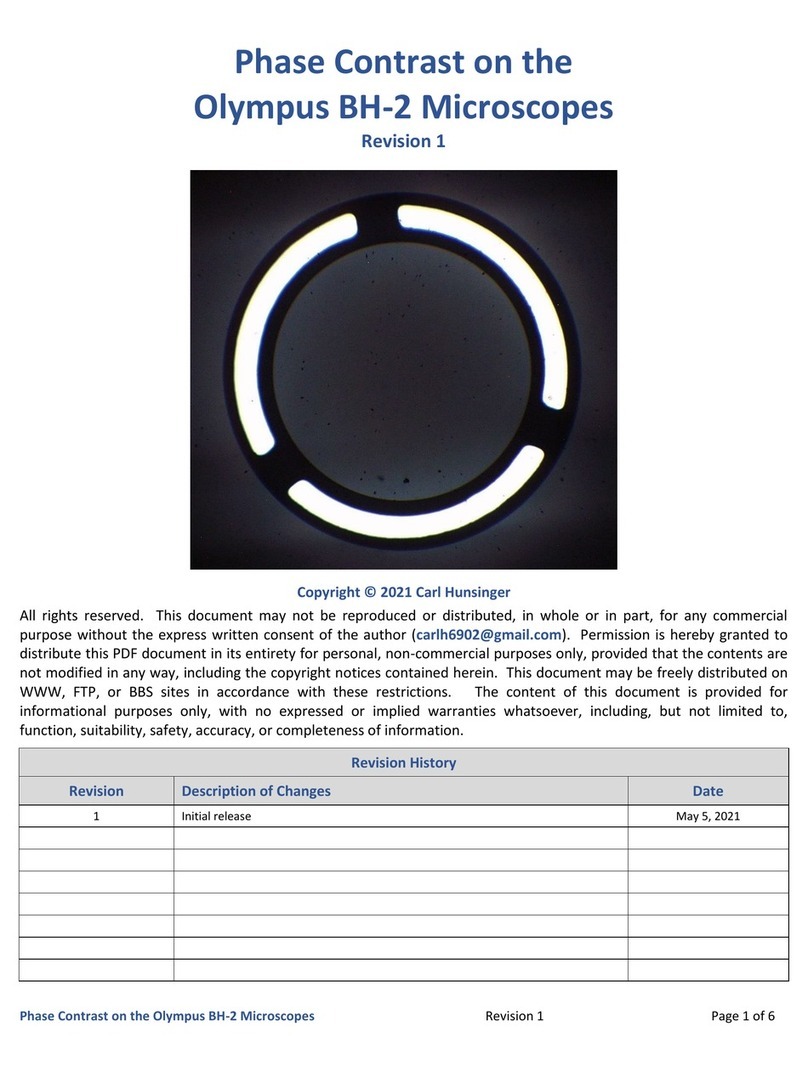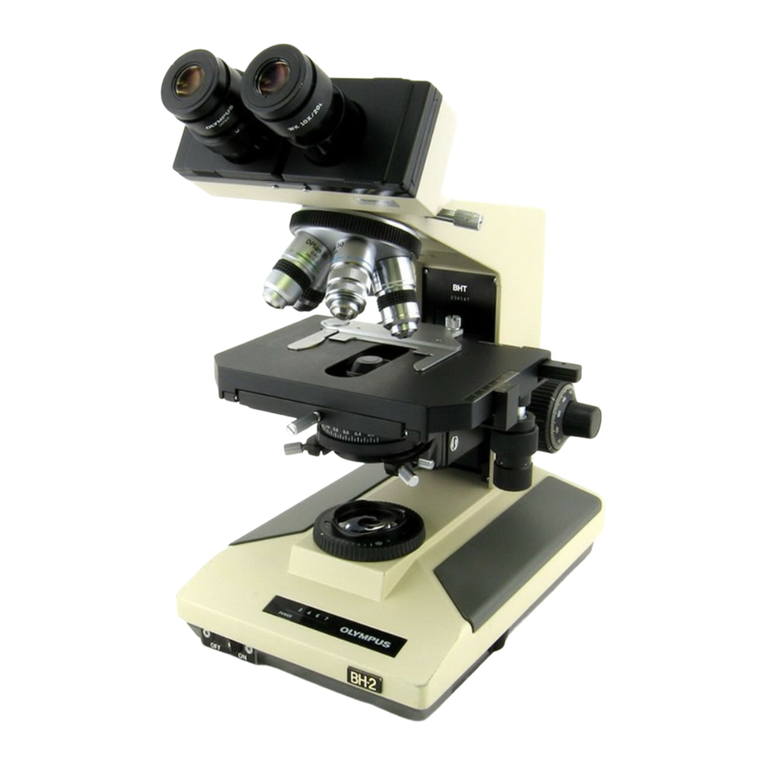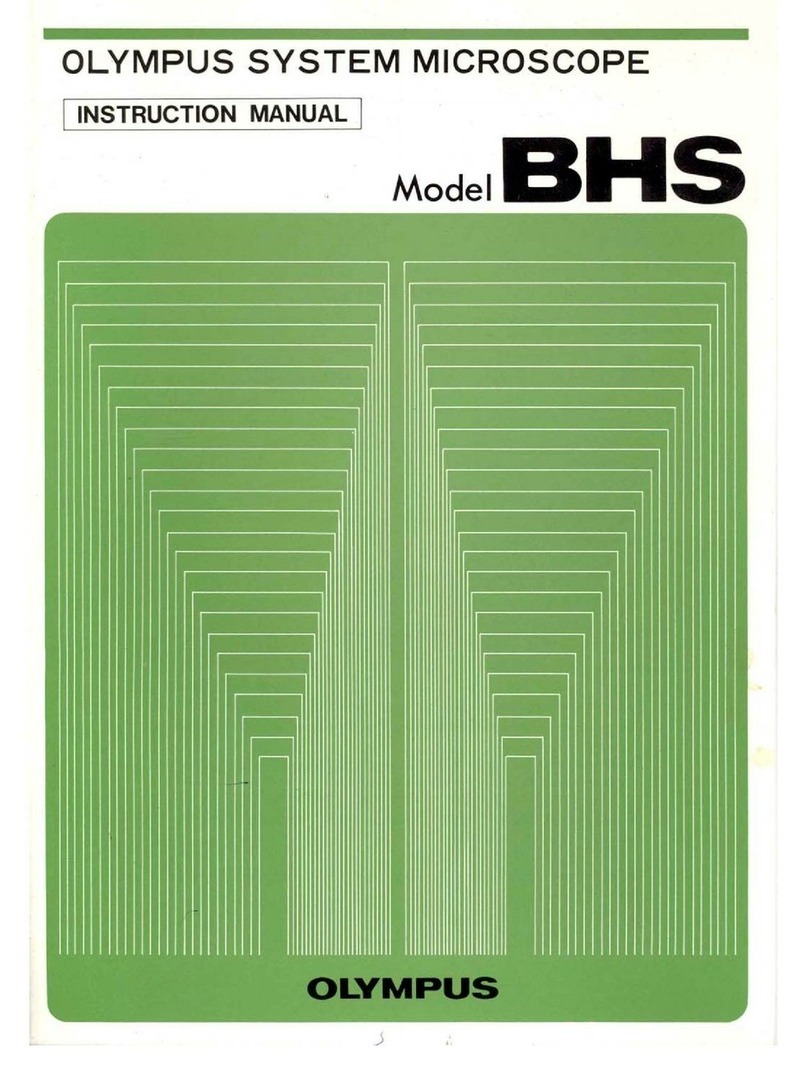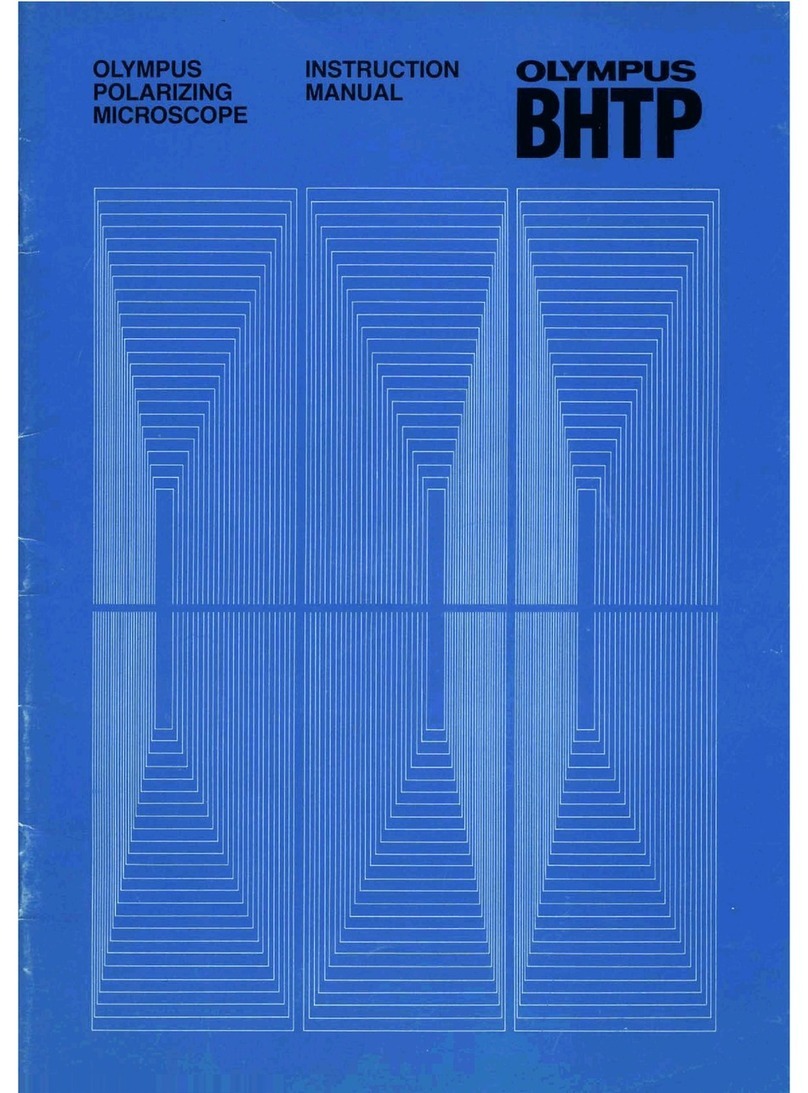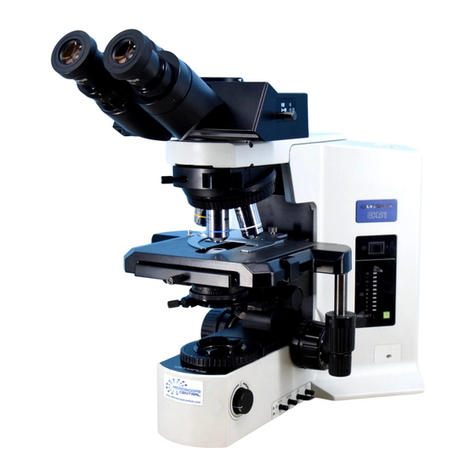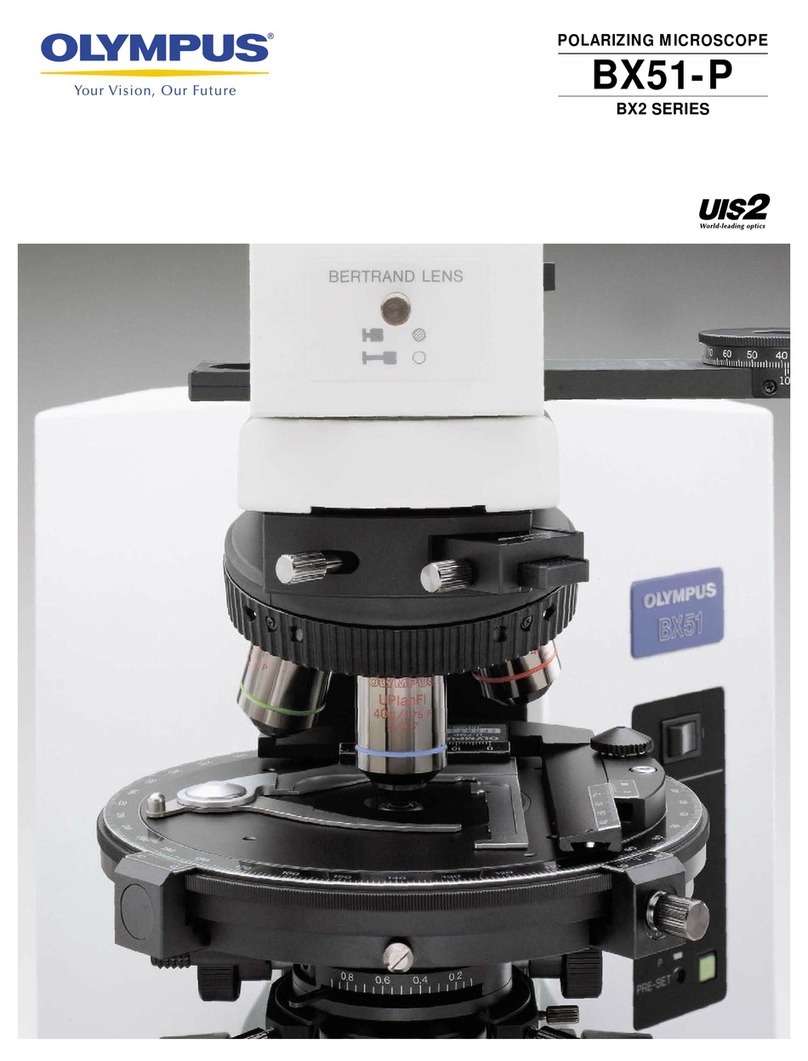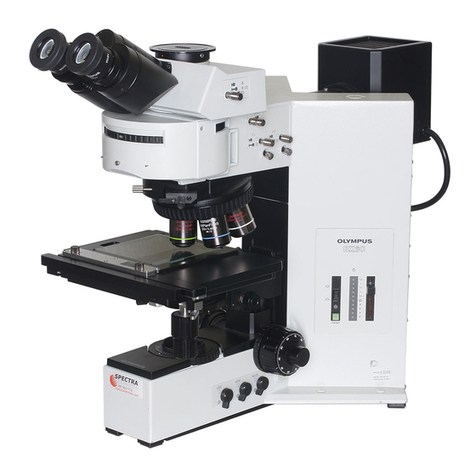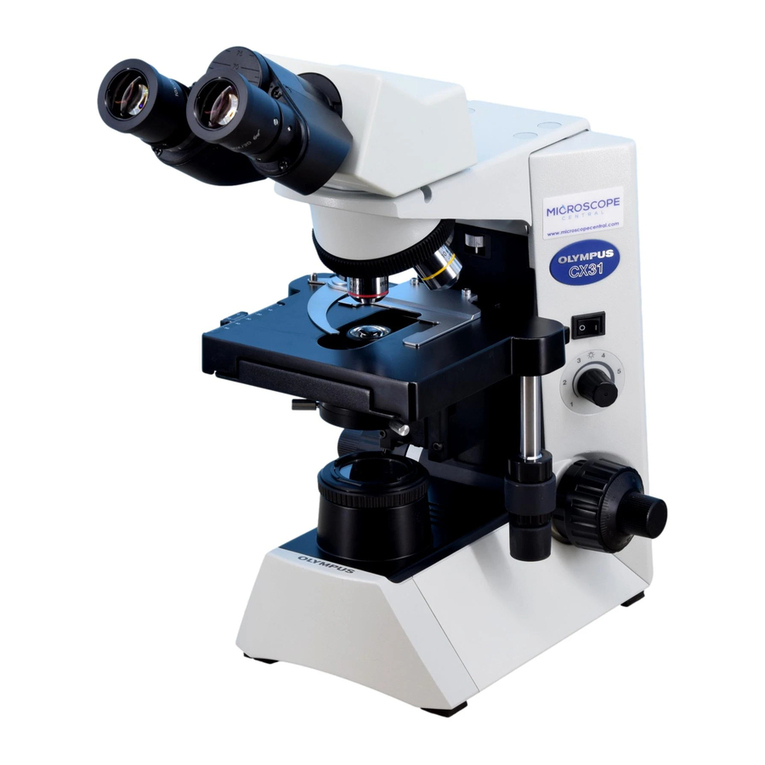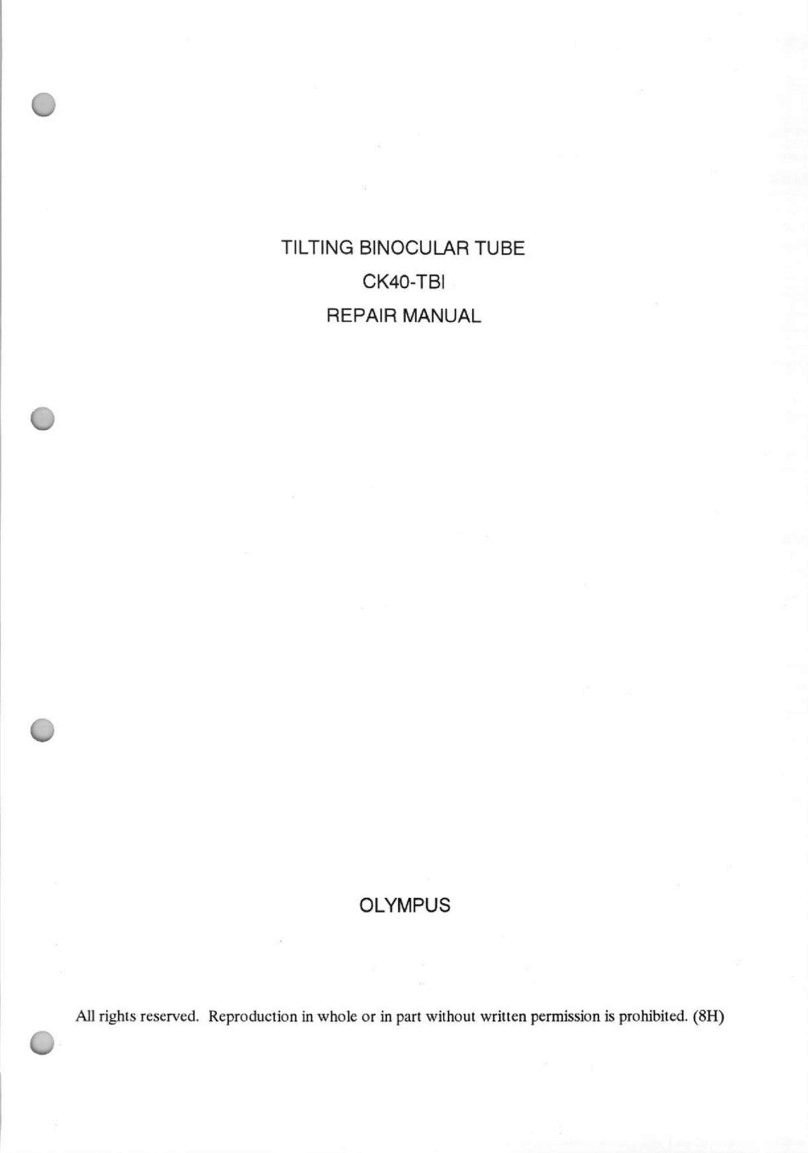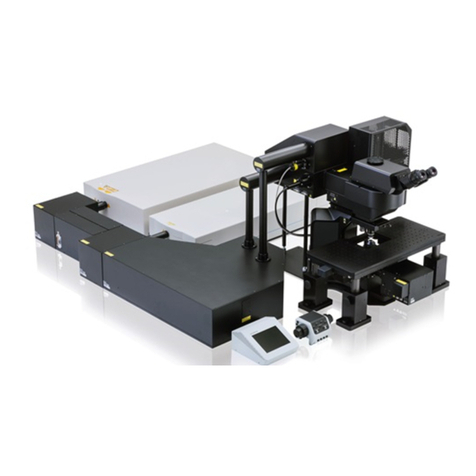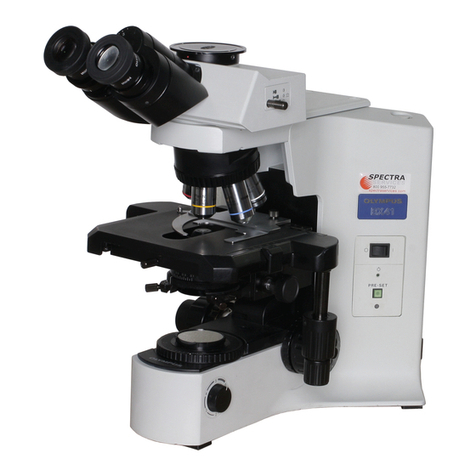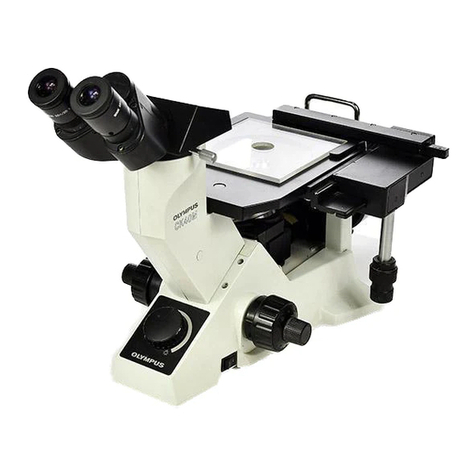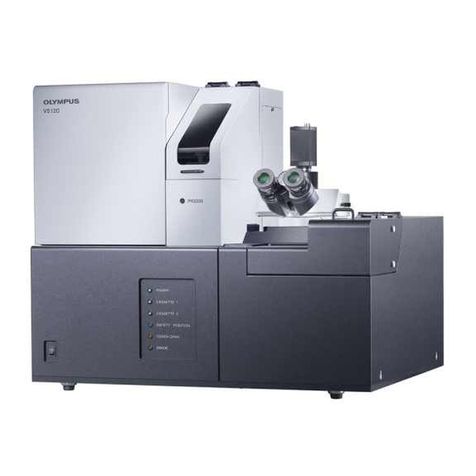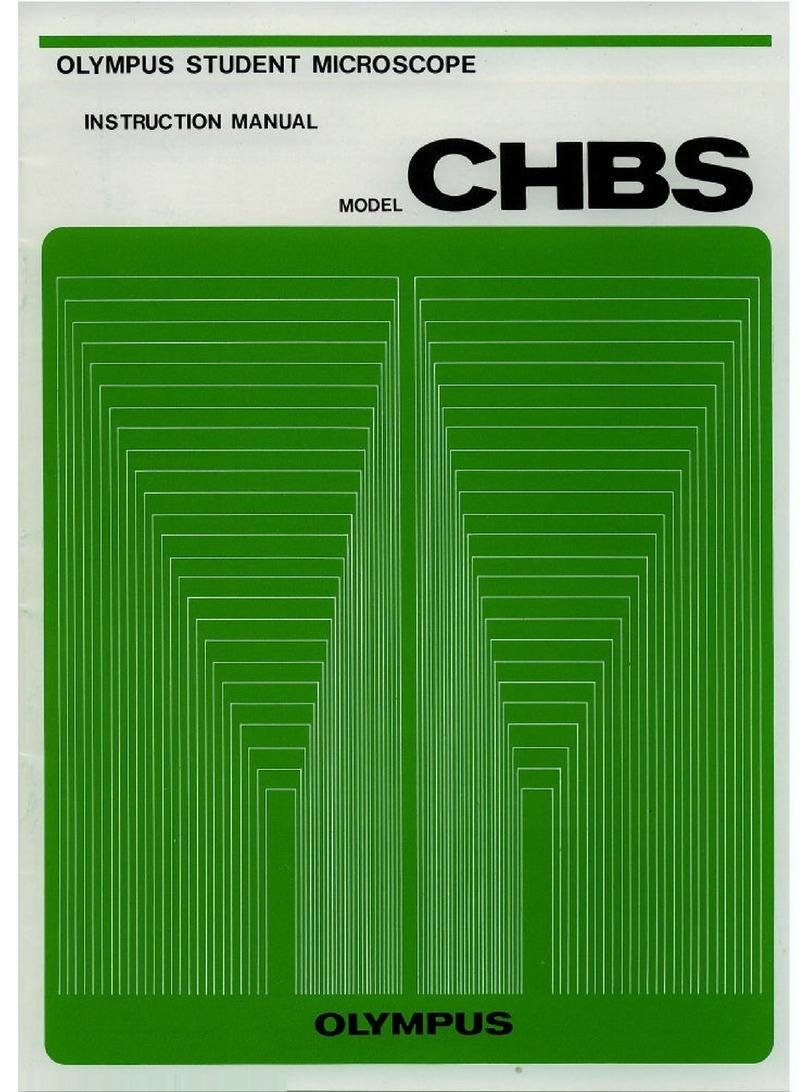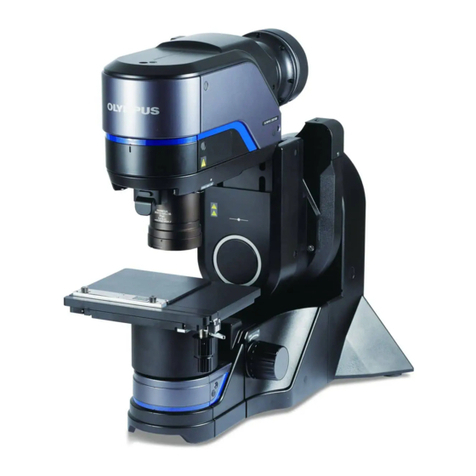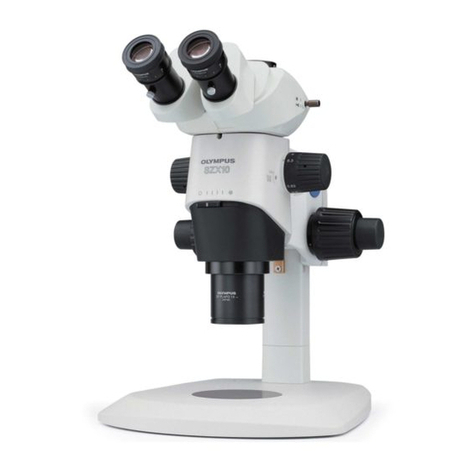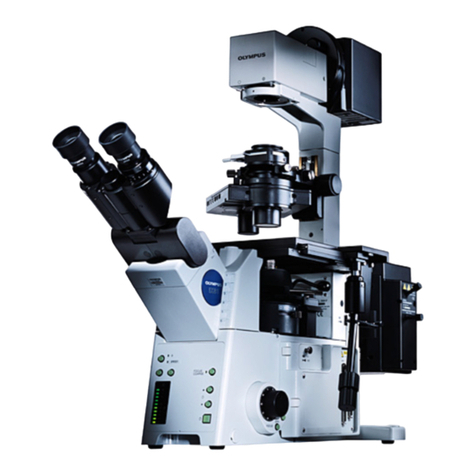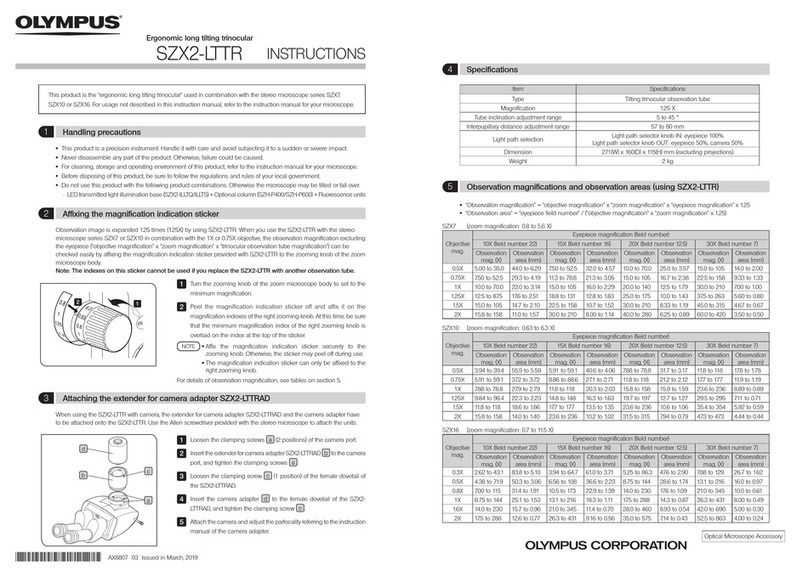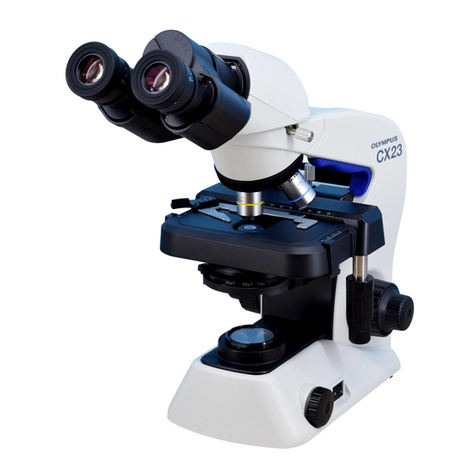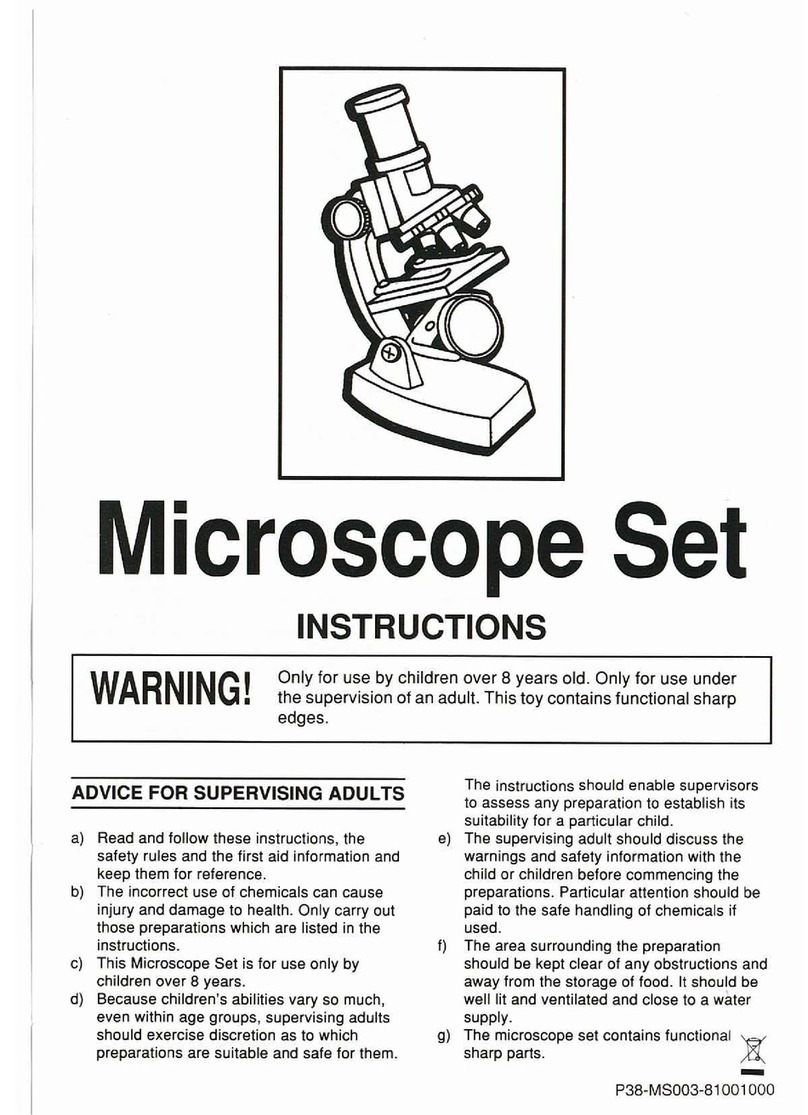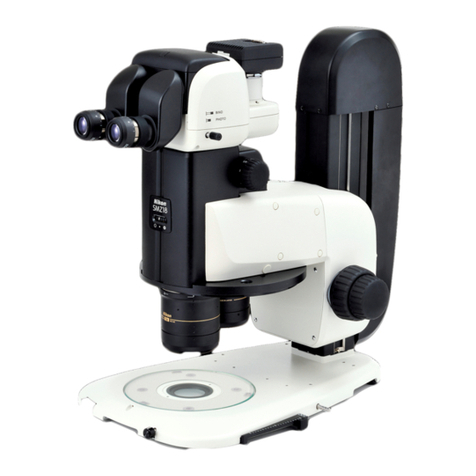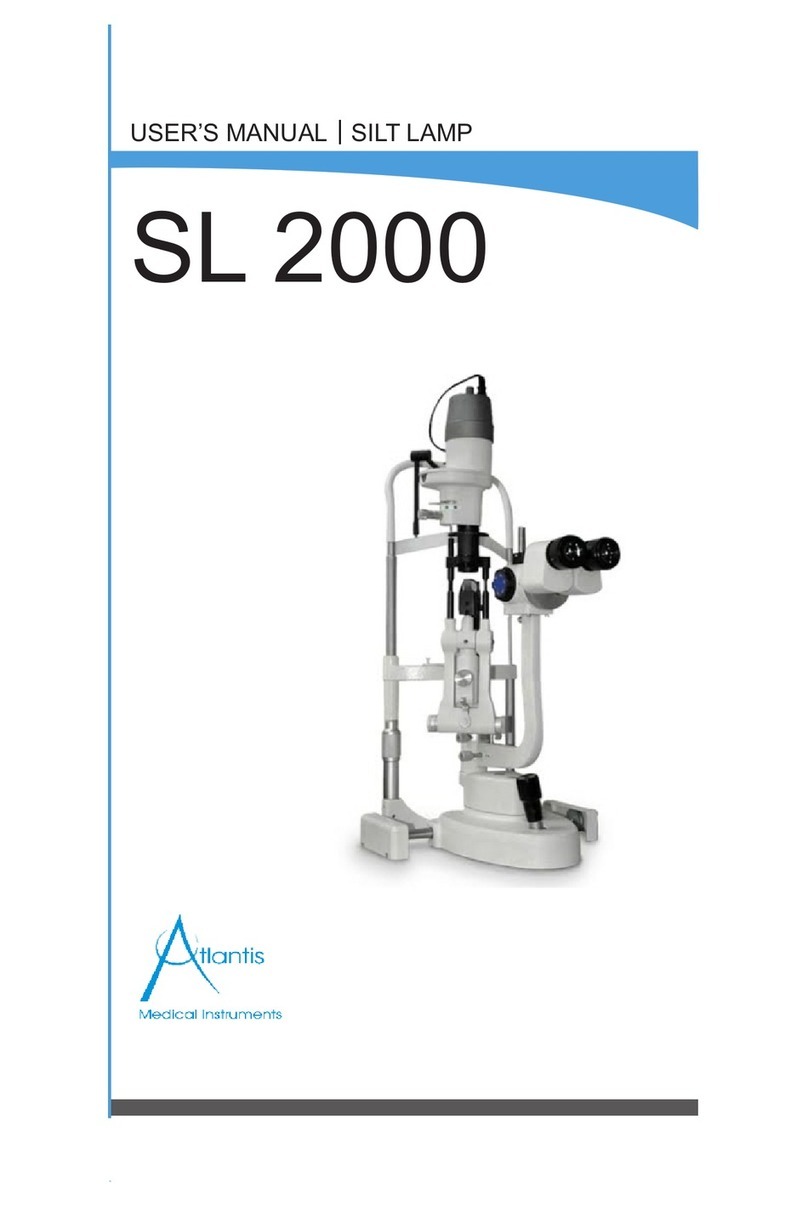1
BX46
SAFETY PRECAUTIONS (Fig. 1)
IMPORTANT
1. If potentially infectious samples may be observed, use protective gloves or
other protective means to prevent the skin from contacting with samples
directly.
After observation, be sure to clean the portion contacted with samples.
· Moving this product is accompanied with the risk of dropping the
samples. Be sure to remove the samples before moving this product.
· In case the samples is damaged by erroneous operation, promptly
take the infection prevention measures.
· Follow the procedures described in Chapter “Getting Ready” (see on
page 2) prior to using the accessories of this product. Otherwise, the
stability of the device will be lost and the dropped samples will cause
the possibility of infection.
· When you maintain the device which may have contacted with
potentially infectious reagents, be sure to wear the protectors such as
gloves, or clean the device prior to operation.
· Before disposing of device contacted with potentially infectious samples,
be sure to follow the regulations and rules of your local government.
2. Install the microscope on a sturdy, level table or bench.
3. Be careful not to tilt the microscope too much. Otherwise, the mobile
parts such as the light path selector knob may move in unintended
directions.
4. Always use the power cord provided by Olympus. If no power cord is
provided, please select the proper power cord by referring to the section
“PROPER SELECTION OF THE POWER SUPPLY CORD” at the end of
this instruction manual.
If the proper power cord is not used, product safety performance cannot
be warranted.
5. Always ensure that the grounding terminal of the microscope and that of
the wall outlet are properly connected. If the equipment is not grounded,
Olympus can no longer warrant the electrical safety performance of the
equipment.
Fig. 1
Operation Using the LED Lamp
Safety Note on LED (Light Emitting Diode)
The LED incorporated in the LED lamp housing is a class 1 LED
product. The light emitted by LED is basically safe, but do not look at
the illumination light directly for an extended period to prevent your eye
from being injured
CLASS 1 LED PRODUCT
Operation Using the Halogen Bulb
1. To avoid potential shock hazards and burns when replacing the halogen
bulb, set the main switch of the TL4 power supply unit to “ ” (OFF) and
allow the lamp socket @ and bulb to cool before touching them.
Designated bulb 6V30WHAL (PHILIPS 5761)
Always use the designated lamp bulb. Using other bulb may
cause malfunction.
2. If the lamp cable or power cord comes in contact with the lamp socket
or its surroundings, the cable or cord may be melted by the heat, causing
an electric shock or fire hazard. To prevent this, distribute the lamp cable
and power cord at enough distances from the lamp socket.
3. The standard service life of the lamp socket is eight (8) years of use or
20,000 hours of total power ON period, whichever is the shorter period.
For details, see Inspection Sheet on page 35.
1
CAUTION
